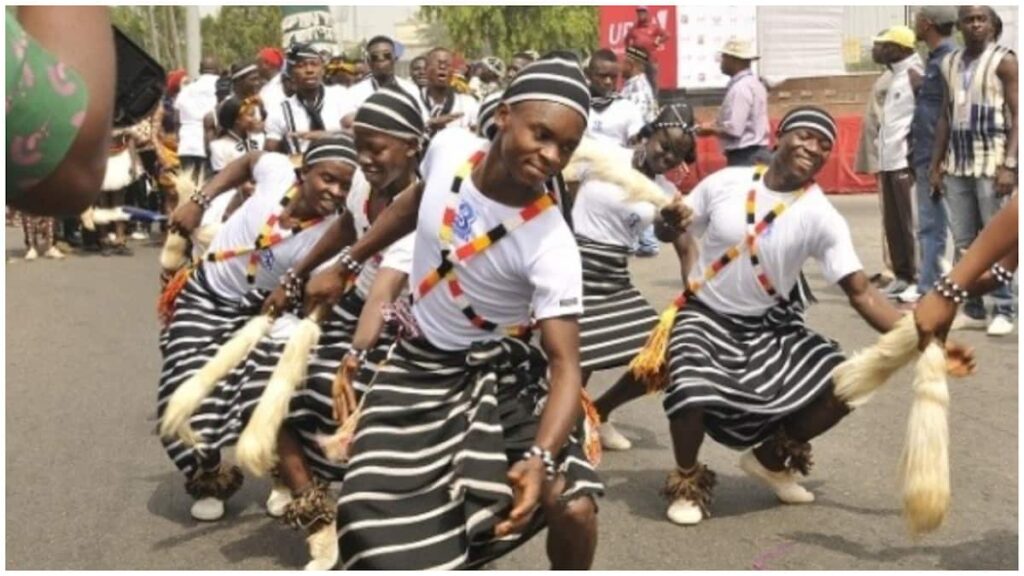LTiv (or Tiiv) is a Tivoid ethnic group. They constitute approximately 5 percent of Nigeria’s total population, and number over 15 million individuals throughout Nigeria and Cameron. If you wish to learn interesting facts about the people of the Tiv ethnic group in Nigeria, then the following would help.
1. State of Residence
The Tiv people are found in different states in Nigeria. They include Benue, Taraba, Nasarawa, Plateau, Cross River, and Adamawa statee as well as Abuja City.
2. Language and Ethnicity
The Tiv people speak the Tiv language. The language is a branch of the Benue-Congo language family and ultimately belongs to the phylum of Niger-Congo. Also, the people belong to the Tivoid ethnic group.
3. Tiv’s great trek
The Tiv ethnic group believe that they came into their present location after wandering through southern, south-central as well as west-central Africa, some of them settled in Nigeria at the beginning of 1500 common era (CE). At first, they had no king but upon contact with the Europeans, a system of rulership was formed. Anthropologists classify them as ancephalous.
4. Political Organisation
In pre-colonial times, Tivswere segmented in their political structure. The people had no administrative divisions, councils as well as chiefs. The leadership of the people was based on age, influence as well as affluence.
The leader’s role was always clear-cut. They were to furnish safe conduct, arbitrate disputes within their lineages, sit on moots and also lead the people in all internal as well as external matters.
5. Line of Descent
The trace of the people’s descent is patrilineal. Tivs have a highly developed sense of genealogy.
6. Clan membership is one of the interesting facts about the Tivs
The people all belong to a clan in the tribe. Their ancestry can be traced to an ancient man named Tiv who had two sons. As a result, all Tivs consider themselves to be members of Ichongo or Ipusu. They were both the sons of Tiv. These two clan groups are further sub-divided into other groups which are so divided into smaller branches.
7. Cultural Attire
The people of Tiv have a national cultural attire which they wear for special occasions. It is the black and white striped anger. The history of the attire is that the people discovered that the Zebra they used for meat and skin as well as ceremonial attire was not native to the area they settled in. As such, when they acquired the skill of the loom, they wanted to honour their heritage.
So, they weaved a cloth with black and white stripes which is reminiscent of the Zebra skin. Initially, they wore the material simply around their torso. In recent times, they make it into elaborate robes that the traditional rulers and elders wear. In addition to the cloth, they also wear black and white beads. Also, they have other cultural attires like Chado, Godo, Tugudu as well as Deremen.
8. Music and Entertainment
The people always hold festivals. For these festivals, they make use of locally made musical instruments. They have different instruments which they use for political as well as ceremonial entertainment. Some of their key instruments are kakaki, Ilyu, Indyer, Akya, Adiguve, as well as Gbande.
9. Means of Communication
In pre-colonial times, the people had a means of disseminating information. A messenger is traditionally called Ortindin or Ortyom. The elders of the community choose him to run errands. The leaders also send him to heads of the Neighbouring families when they want to hold a crucial meeting.
Also, a cow horn instrument locally known as Kolugh Ki Bua is used by farmers. Whenever the farmers have a job to do, the public relations officer of the farmers association uses the instrument to wake them up. Individuals as well as rulers of the community communicate with each other via physical as well as metaphysical means. There is also the use of village drums to disseminate information.
10. Religion
The pre-colonial Tiv people were fetish. They had strong beliefs in charms, rituals as well as ancestors. Farmers were famous for tying charms in their farms to ward off trespassers. They also had rainmakers among them. They were in the practice of the traditional religion that involved divination and observances.
Also, social behaviour was greatly influenced by the fear of herbalists as well as witches. In recent times, they are predominantly Christians with a small population of Muslims and traditional worshippers.
11. Cuisine
The most popular food among the Tiv people is usually solid, cooked or pounded. Most times, they prepare their food with hot water. The preparation of their food is usually from crops like yam, coco yam, cassava, beans as well as corn.
Some common food of the Tiv people are, ruam kumen(pounded yam), choko(dafa) and also ruam nahan(turned food). Other common foods are vegetables, Atuur, pocho, peanuts and sesame and also mzembe(roasted peas).
12. Drama
The Tiv are popular for their art of storytelling. It is a way that they pass on their culture and tradition to their generation. The people use carved masks and puppetry as a form of masquerade.
The masquerade is the way the people express themselves. Individuals hide under the mask and take on the art of spiritual beings like adzov. Performers of the drama hide their identities and only reveal them at the end of the play by their performance.
13. Sculptures
The people are skilful in crafts making. They have a number of sculptures which are ascribed to the ethnic group. For example, the kwagh-hir mask made in the 1960s signifies their skillfulness in crafts.















